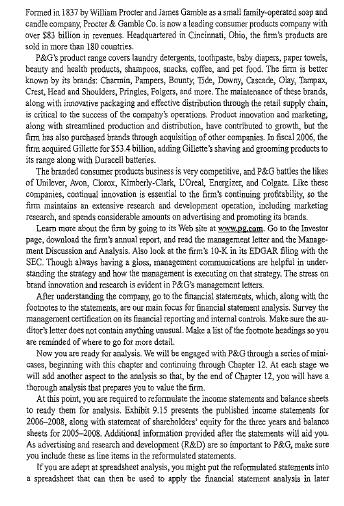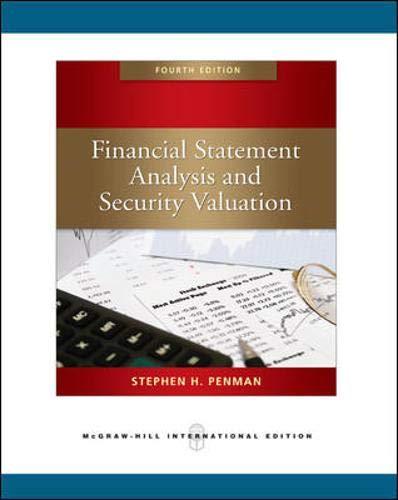Question:
E9.10. Reformulation and Effective Tax Rates: Home Depot, Inc. (Medium) Home Depot is the largest home improvement retailer in the United States and one of the largest retailers Home Depot's income statements for 2003-2005 are below, along with an extract from its tax footnote. Reformulate the income statement for 2005 with the appropriate tax alle- cation between operating activities and financing activities. Apply both the top-down and bottom-up methods. Calculate the effective tax rate on operations for 2005.
THE HOME DEPOT, INC. AND SUBSIDIARIES Consolidated Statements of Earnings lemounts in mullions, except per-share data) Fiscal Year Ended January 30, February 1, February 2, 2005 2004 2003 Net sales $73,094 564,816 $58,247 Cost of merchandise sold 46,664 64,236 40.139 Gross profit 24,430 20,580 18, 108 Operating expenses Seling and store operating 15,105 12,588 11,275 General and administrative 1.399 1,146 1,002 Total operating expenses 16,504 13,734 12.278 Operating lecome 7,926 6,846 5,830 interest income (expense Interest and investment income 55 59 79 Interest expense 170) (62) (37) interest, net (14) 42 Earnings before provision for income taxes 7,912 6.843 5,872 Provision for income taxes 2.911 2,539 2,208 Net earnings $ 5,001 $ 4,304 $ 3,664 Weighted average common shares Basic earnings per share 2,207 $2.27 2,283 5 188 2.336 31.57 Diluted weighted average common shares 2.216 2,289 Diluted earnings per share $ 2.26 $ 1.68 2,344 $ 1.56 Note : Income Tax The provision for income taxes consisted of the following famounts in Fiscal Year Ended January 30, February 1. February 2 2005 2004 2003 Coment: Federal State Foreign Deferred: Federal State Foreign Total $2,153 279 $1.520 $1,679 307 239 107 117 1,934 2,035 573 174 27 1 5 (2) 605 173 $2,539 $2,208 The Company's combined federal, state, and foreign effective tax rates for fiscal 2005, 2004, and 2003, net of ulisets generated by federal, state, and foreign tax benefits, were 36.8%, 37.1%, and 37.5%, respectively The reconciliation of the provision for income taxes at the federal statutory rate of 35% to the actual tax experse for the applicable fiscal years is as follows (amounts in millons): Fiscal Year Ended January 30, February 1, February 2, 2005 2004 2003 Income taxes at federal statutory rate $2,769 $2,395 $2,058 State income taxes, net of federal income tax benefit 215 217 156 Foreign rate differences (17) (29) (1) Change in valuation allowance (31) Other net (25) (44) Total $2.911 $2,539 $2.708 Real World Connection Exercises E5.12, E11.10, E12.9, and E14.3 also deal with Home Depot, as does Minicase M4.1.

Transcribed Image Text:
Formed in 1837 by William Procter and James Gamble as a small family-operated soap and candle company, Procter & Gamble Co. is now a leading consumer products company with over $83 billion in revenues. Headquartered in Cincinnati, Ohio, the firm's products are sold in more than 180 countries. P&G's product range covers laundry detergents, toothpaste, baby diapers, paper towels, beauty and health products, shampoos, snacks, coffee, and pet food. The firm is better known by its brands: Charmin, Pampers, Bounty, Tide, Downy, Cascade, Olay, Tampax, Crest, Head and Shoulders, Pringles, Folgers, and more. The maintenance of these brands, along with innovative packaging and effective distribution through the retail supply chain, is critical to the success of the company's operations. Product innovation and marketing, along with streamlined production and distribution, have contributed to growth, but the firm has also purchased brands through acquisition of other companies. In fiscal 2006, the firm acquired Gillette for $53.4 billion, adding Gillette's shaving and grooming products to its range along with Duracell batteries. The branded consumer products business is very competitive, and P&G battles the likes of Unilever, Avon, Clorox, Kimberly-Clark, L'Oreal, Energizer, and Colgate. Like these companies, continual innovation is essential to the firm's continuing profitability, so the firm maintains an extensive research and development operation, including marketing research, and spends considerable amounts on advertising and promoting its brands. Learn more about the firm by going to its Web site at www.pg.com. Go to the Investor page, download the firm's annual report, and read the management letter and the Manage- ment Discussion and Analysis. Also look at the firm's 10-K in its EDGAR filing with the SEC. Though always having a gloss, management communications are helpful in under- standing the strategy and how the management is executing on that strategy. The stress on brand innovation and research is evident in P&G's management letters. After understanding the company, go to the financial statements, which, along with the footnotes to the statements, are our main focus for financial statement analysis. Survey the management certification on its financial reporting and internal controls. Make sure the au- ditor's letter does not contain anything unusual. Make a list of the footnote headings so you are reminded of where to go for more detail. Now you are ready for analysis. We will be engaged with P&G through a series of mini- cases, beginning with this chapter and continuing through Chapter 12. At each stage we will add another aspect to the analysis so that, by the end of Chapter 12, you will have a thorough analysis that prepares you to value the firm. At this point, you are required to reformulate the income statements and balance sheets to ready them for analysis. Exhibit 9.15 presents the published income statements for 2006-2008, along with statement of shareholders' equity for the three years and balancs sheets for 2005-2008. Additional information provided after the statements will aid you. As advertising and research and development (R&D) are so important to P&G, make sure you include these as line items in the reformulated statements. If you are adept at spreadsheet analysis, you might put the reformulated statements into a spreadsheet that can then be used to apply the financial statement analysis in later








